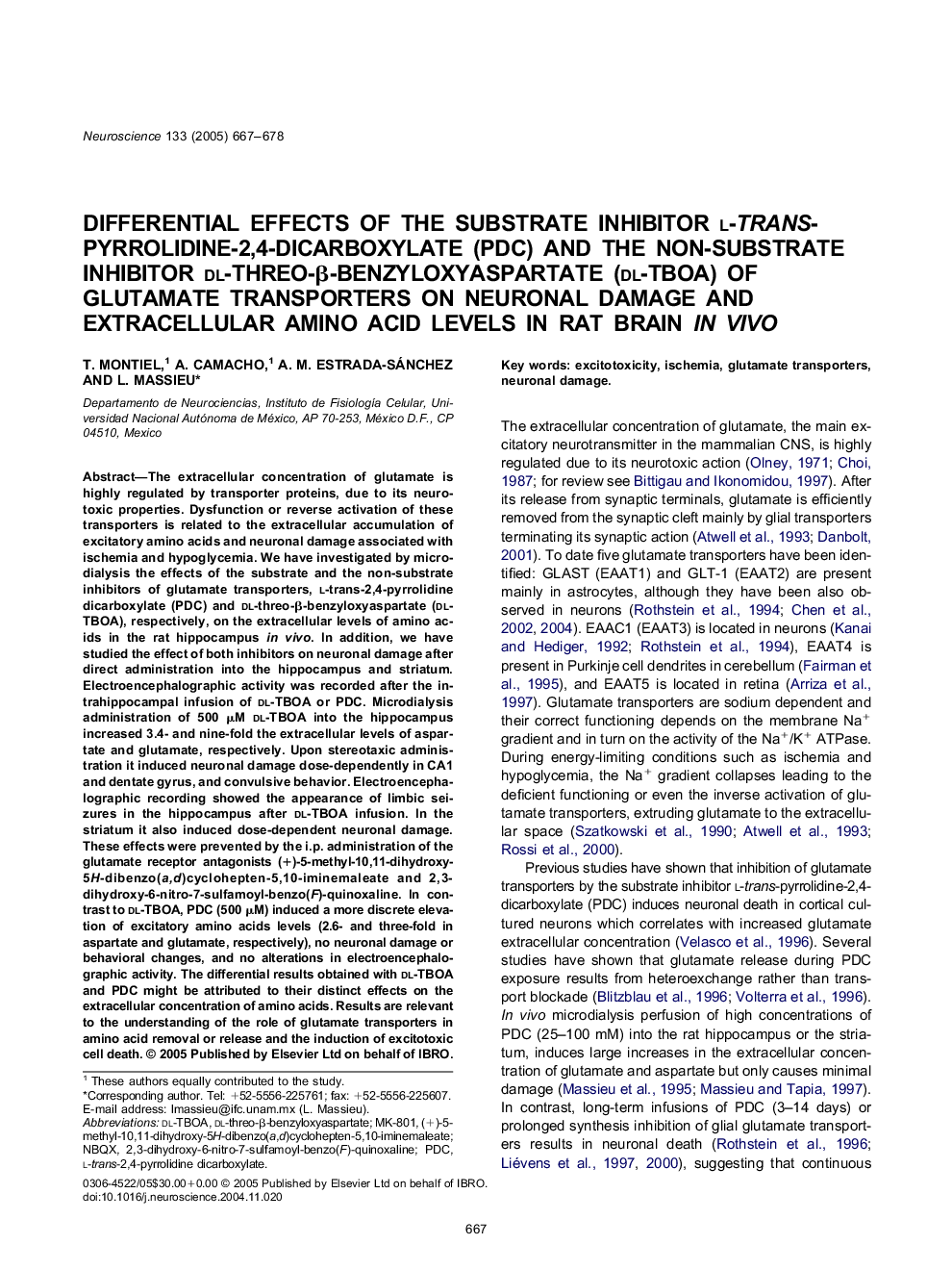| Article ID | Journal | Published Year | Pages | File Type |
|---|---|---|---|---|
| 9425616 | Neuroscience | 2005 | 12 Pages |
Abstract
The extracellular concentration of glutamate is highly regulated by transporter proteins, due to its neurotoxic properties. Dysfunction or reverse activation of these transporters is related to the extracellular accumulation of excitatory amino acids and neuronal damage associated with ischemia and hypoglycemia. We have investigated by microdialysis the effects of the substrate and the non-substrate inhibitors of glutamate transporters, l-trans-2,4-pyrrolidine dicarboxylate (PDC) and dl-threo-β-benzyloxyaspartate (dl-TBOA), respectively, on the extracellular levels of amino acids in the rat hippocampus in vivo. In addition, we have studied the effect of both inhibitors on neuronal damage after direct administration into the hippocampus and striatum. Electroencephalographic activity was recorded after the intrahippocampal infusion of dl-TBOA or PDC. Microdialysis administration of 500μM dl-TBOA into the hippocampus increased 3.4- and nine-fold the extracellular levels of aspartate and glutamate, respectively. Upon stereotaxic administration it induced neuronal damage dose-dependently in CA1 and dentate gyrus, and convulsive behavior. Electroencephalographic recording showed the appearance of limbic seizures in the hippocampus after dl-TBOA infusion. In the striatum it also induced dose-dependent neuronal damage. These effects were prevented by the i.p. administration of the glutamate receptor antagonists (+)-5-methyl-10,11-dihydroxy-5H-dibenzo(a,d)cyclohepten-5,10-iminemaleate and 2,3-dihydroxy-6-nitro-7-sulfamoyl-benzo(F)-quinoxaline. In contrast to dl-TBOA, PDC (500μM) induced a more discrete elevation of excitatory amino acids levels (2.6- and three-fold in aspartate and glutamate, respectively), no neuronal damage or behavioral changes, and no alterations in electroencephalographic activity. The differential results obtained with dl-TBOA and PDC might be attributed to their distinct effects on the extracellular concentration of amino acids. Results are relevant to the understanding of the role of glutamate transporters in amino acid removal or release and the induction of excitotoxic cell death.
Keywords
Related Topics
Life Sciences
Neuroscience
Neuroscience (General)
Authors
T. Montiel, A. Camacho, A.M. Estrada-Sánchez, L. Massieu,
